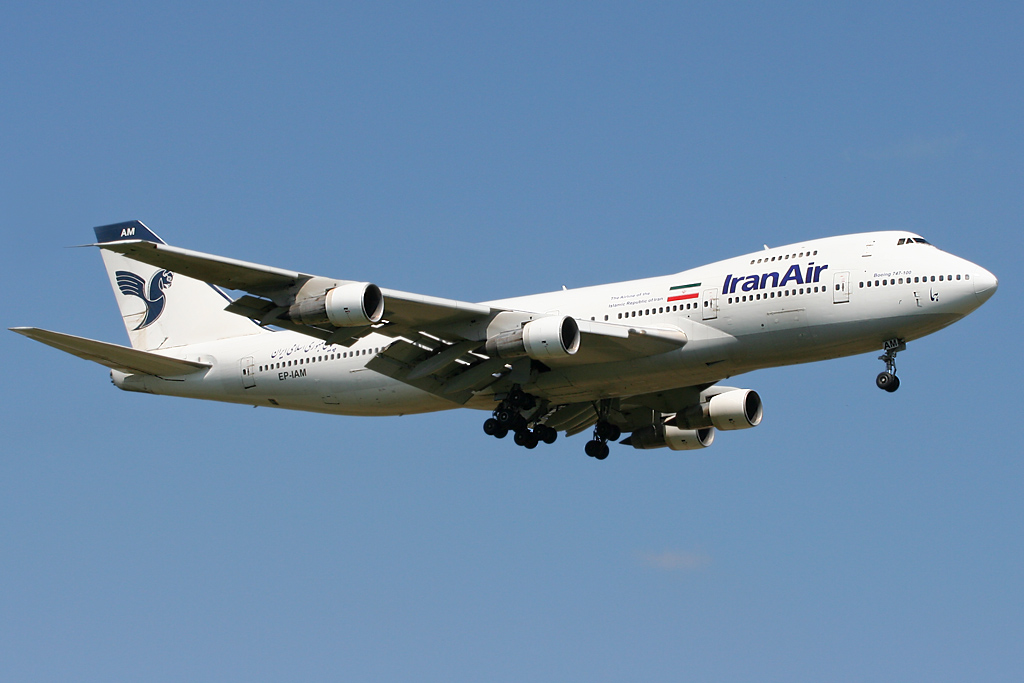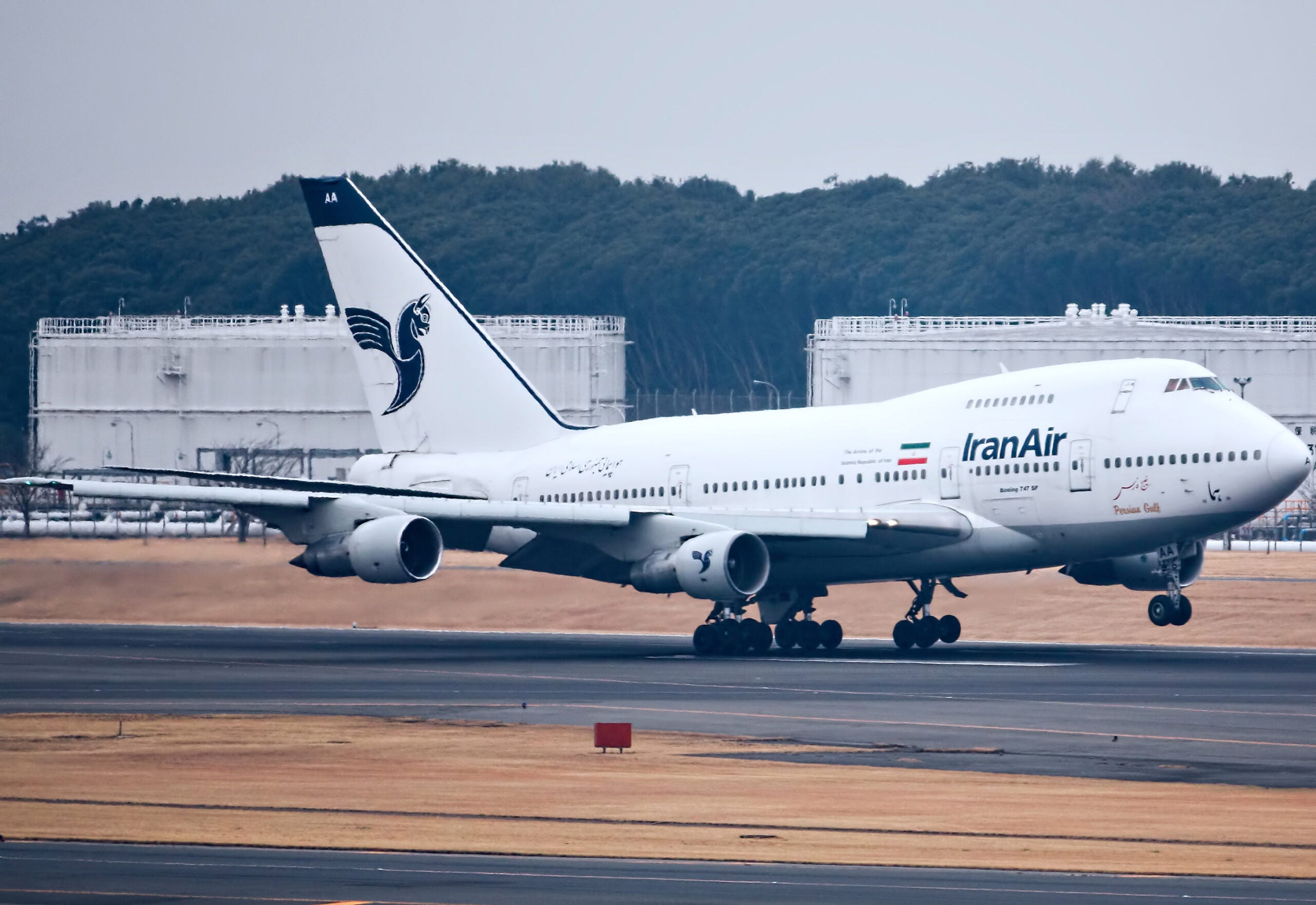Today, many airlines are desperate to dispose of older aircraft equipment and Iran is no exception, but the types it wants to unload are old. Really, really old.
A bid deposit of around $4,000 will secure your chance to buy any one of a dozen ex-Iran Air airliners — comprising examples of the Airbus A300 and A310, as well as the Boeing 727, 747, and the rare 747SP.
The full list of aircraft up for auction is as follows:
- Airbus A300B2-200 EP-IBT c/n 185
- Airbus A300B2-200 EP-IBV c/n 187
- Airbus A300B2-200 EP-IBZ c/n 226
- Airbus A310-200 EP-IBN c/n 375
- Airbus A310-200 EP-IBQ c/n 389
- Boeing 727-200 EP-IRR c/n 20946
- Boeing 727-200 EP-IRS c/n 20947
- Boeing 747-100 EP-IAM c/n 21759
- Boeing 747-200 EP-IAG c/n 21217
- Boeing 747SP EP-IAA c/n 20998
- Boeing 747SP EP-IAB c/n 20999
- Boeing 747SP EP-IAD c/n 21758
Of the Airbus types, the A300 is the European manufacturer’s first-generation widebody twin-jet, while the A310 is a shortened derivative, introduced in 1982. The U.S. equipment consists of the classic trijet 727, two of the earliest 747 variants — the 100 and 200 Series — and the short-bodied 747SP.
Admittedly, these aircraft are all now very old — the trio of 747SPs being the most antiquated, the earliest having been first flown in 1976 — and it’s hard to see they could have much use as part of a viable commercial venture.
Most of these aircraft were grounded some years ago and Iran Air is now giving them up entirely, on account of their age, reduced overall passenger numbers, as well as the significant difficulties the carrier faces in getting the spares required to fly them.

In all likelihood, the dozen jetliners are simply too old to be economically refurbished and returned to regular service. Stripping them down as a source of spare parts is a more viable option, or simply breaking them up for their scrap value.
But beyond the question of what a customer is actually going to do with one or more of these veteran airliners, there’s the very real problem of U.S. sanctions, under which American companies are forbidden from dealing with Iran. Iran Air, specifically, is a sanctioned entity, according to the U.S. government.
Even if a potential non-U.S. customer manages to get around these sanctions, there’s still no guarantee that these aircraft could be returned to flight. It’s not clear if Iran Air’s aircraft are sanctioned specifically themselves, but U.S.-based companies would be wary about dealing with them regardless. Foreign companies could be reluctant, as well, for fear of getting hit with secondary sanctions.
It has been suggested that the airliners might have a useful scrap value, which could make them attractive to a breaker, but the United States is also likely to be watchful of exactly where any spare parts end up. “Iran Air also has a history of diverting spare aircraft parts intended for civil aviation to military-linked entities and for military purposes,” notes the Federal Register, the official journal of the U.S. federal government.

Bearing in mind these potential hurdles, it might be that another Iranian-based airline emerges as the most probable recipient of the aircraft, in which case they are most likely to serve as a spare parts source. Candidates could include Caspian Airlines (747-100/200), Iran Airtour (A300 and A310), Mahan Air (A300 and A310), Meraj Airlines (A300), Qeshm Air (A300), and Taban Air (A310). As for the 727 and 747SP, these have otherwise disappeared from Iranian service.
If there’s no domestic airline interest, another potential taker for the 747s could be the Islamic Republic of Iran Air Force (IRIAF). In August, reports emerged of damage sustained to an IRIAF 747-200 during an engine test and it was suggested that an ex-Iran Air 747SP could serve as a donor providing replacement engines. The 747 provides the IRIAF with an important aerial refueling and long-range transport capability, including support of the Iranian contingent in Syria, and additional spares could be highly prized. According to figures provided by Flight International’s World Air Forces 2020, the IRIAF operates seven transport-configured 747s and another three outfitted as air-to-air refueling tankers.
Among the aircraft up for grabs, the Boeing 747SP is almost certainly the most interesting. While it retained the appearance of the 747, the SP (for Special Performance) was around 48 feet shorter, losing around 100 seats in the process. The resulting aircraft offered reduced fuel consumption and longer range, as well as improved performance across the flight envelope. Only 45 of these ‘mini Jumbos’ were ever built, examples serving with prominent operators including Korean Air Lines, Pan Am, QANTAS, and TWA. In its latter period of commercial service, Iran Air was the major operator, until it finally withdrew the type in 2016.
The three 747SPs now being offered were retired in 2013 and 2014.

Ultimately, the 747SP found its niche as a VIP transport for governmental customers in the Middle East, while one other example, the Stratospheric Observatory for Infrared Astronomy, or SOFIA, serves NASA as a laboratory carrying a 106-inch reflecting telescope.
For Iran Air, the latest aircraft disposals reflect its aim of rationalizing its fleet, which is now dominated by Airbus twin-jet types, as well as a fleet of ATR 72-600 turboprops for regional connections. The last American equipment in the fleet is a pair of MD-82s and a single 747-200 used for cargo transport.

In recent years the airline has faced many hurdles, with sanctions preventing an overhaul of its aging fleet and reducing the availability of spares. At the same time, operations have been severely limited by a ban on its A320, 727, and 747 fleets from the European Union over safety concerns.
The 2015 nuclear deal saw sanctions relaxed and provided the impetus for Iran Air to place orders with the ‘big two’ commercial manufacturers. Tehran had ordered for 80 Boeing jetliners valued at around $16.6 billion, plus 118 Airbus aircraft worth around $25 billion. Additional regional aircraft orders were placed with ATR and Bombardier. However, the related contracts were suspended after President Donald Trump’s decision to withdraw from the nuclear deal in 2018 and to impose a new round of sanctions. In the meantime, just three of the Airbus aircraft and a few ATR turboprops had been delivered to Iran.
It’s just possible that a buyer might see the potential in these aircraft and snap them up — providing it’s not deterred by the sanctions. In the meantime, these decrepit airliners serve as an unfortunate symbol for the parlous state of Iran’s flag-carrier airline.
Contact the author: thomas@thedrive.com
